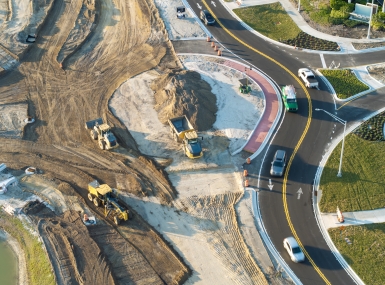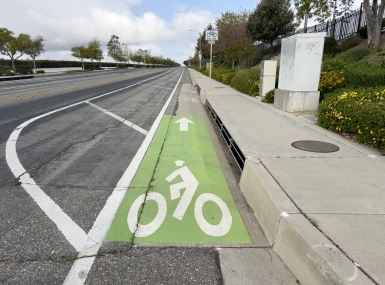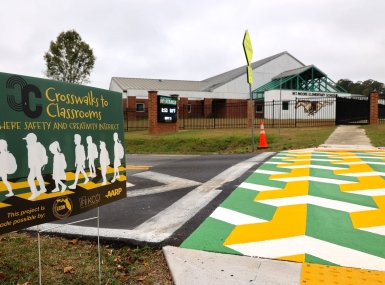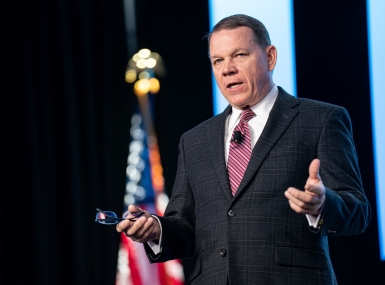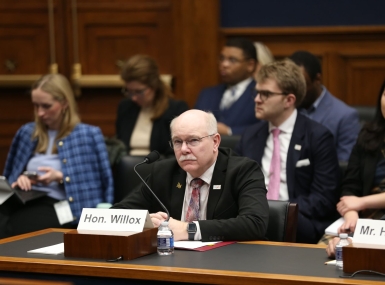Legislative Analysis for Counties: Freight Rail Safety Legislation in the 118th Congress

Upcoming Events
Related News
Following the freight train derailment and ensuing disaster that occurred in East Palestine, Ohio in early February, federal policymakers are crossing the aisle to improve freight rail safety. NACo strongly supports efforts to improve the safety of our national rail freight network:
“Counties welcome the efforts of our congressional partners to pass bipartisan legislation to strengthen the safety of our nation’s freight rail network,” said National Association of Counties Executive Director Matthew Chase. “As home to nearly every rail-highway at-grade crossing, counties appreciate lawmakers’ attention to reducing rail delays that create blocked crossings resulting in safety risks and economic challenges. We urge Congress to pursue measures in partnership with state and local governments and other stakeholders. As counties prioritize the health and well-being of our residents and communities, we stand ready to enhance the safety and efficiency of our nation’s freight rail infrastructure.”
Currently, three bipartisan pieces of legislation that would address freight rail safety are moving through Congress:
- S. 576, the Railway Safety Act (original legislation), sponsored by U.S. Sens. J.D. Vance (R-Ohio) and Sherrod Brown (D-Ohio)
- H.R. 1674, the DERAIL Act (House companion), sponsored by U.S. Reps. Chris DeLuzio (D-Penn.) and Nick LaLota (R-N.Y.)
- H.R. 1633, the RAIL Act, sponsored by U.S. Reps. Bill Johnson (R-Ohio) and Emelia Sykes (D-Ohio)
Each bill is nearly identical to the next with some key differences outlined in the table below. Most notably, the House bill sponsored by the Ohio delegation, H.R. 1633, the RAIL Act, does not contain the two-person crew requirement found in S. 576, the Railway Safety Act, and its House companion, H.R. 1674, the DERAIL Act.
Provisions across the versions of legislation important to counties include:
- Authorizing $22 million in appropriations for grants to research, develop and implement wayside defect detectors in accordance with requirements, restrictions and eligibilities of the U.S. Department of Transportation (USDOT) Federal Railroad Administration (FRA) Consolidated Rail Infrastructure and Safety Improvement (CRISI) grant program
- Requiring carriers to address delays that result in blocked crossings, which cost local communities time and money and create extreme safety hazards at at-grade rail crossings, where nearly all are located within county boundaries
- Requiring the strengthening and upgrade of tank cars transporting hazardous materials and establishing a deadline for the phase out of older, less safe cars
- Increasing resources for USDOT Pipeline and Hazardous Materials Safety Administration Assistance for Local Emergency Response Training (ALERT) grants that support hazardous materials (HAZMAT) response training for volunteer or remote emergency responders using new Class I registration fees
The safety of our local communities is paramount for county officials. With roughly 140,000 miles of track nationwide, there are few areas of the country where rail does not leave its footprint directly. Counties are also where the vast majority of dangerous at-grade rail-highway crossings exist with many in rural areas even lacking warning signs and signals.
As we continue to learn from the East Palestine derailment, we know there are other risks besides crashes, including serious environmental and climate concerns, than can occur when a train carrying HAZMAT derails. Rail safety is a critical issue for counties, and we urge Congress to improve safety using thoughtful and intentional measures made in partnership with state and local governments that will best safeguard America’s counties and our residents.
Comparison of House and Senate versions of Railway Safety Legislation
Sections | H.R. 1633 – RAIL Act | H.R. 1674 – DERAIL Act (Deluzio & LaLota) / | NACo Policy |
|---|---|---|---|
Creates new
|
|
| Counties urge Congress to provide additional funding to local governments, states and railroads to improve grade crossings and separations allowing for safer interactions between road and rail traffic. |
Expands requirements for rail car inspections. |
|
| Counties support the Rail Routing Risk Assessment required and audited annually by the FRA. Counties urge Congress to further require local and state review of, and input into, the risk model. |
Upgrades wayside defect detectors. |
|
| N/A |
Mandates two- | N/A |
| N/A |
Increases civil penalties for rail safety violations. |
|
| N/A |
Builds safer tank cars. |
|
*The House bill includes additional language “notwithstanding Section 7304 of the FAST Act” (est. different phase out schedules for some HAZMATs) | Counties support rigorous tank car standards, including enhanced thermal protection for tank cars and eliminating the usage of older tank cars that are considered unsafe for moving hazardous materials. |
Increases HAZMAT training for first responders. |
|
| NACo passed a 2020 – 2021 resolution calling on additional appropriations for ALERT grants to make up for funding levels that depend on how efficiently states use Hazard Mitigation Emergency Preparedness grants. As states utilize this funding more effectively, less resources are left for ALERT grants. |
Authorizes appropriations for research & development of wayside detectors. | N/A |
| Counties believe Congress should provide assistance to local governments, states, and railroads for the rehabilitation, preservation, and improvement of rail lines with the goal of maintaining and improving needed freight service. |
